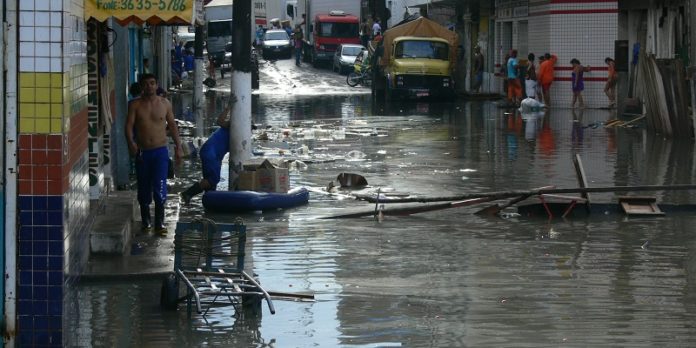A recent investigation of over 100 long periods of river level records from the Amazon demonstrates a huge increment in the frequency and seriousness of floods. The examination of the potential causes could add to more precise flood expectations for the Amazon Basin.
Water levels of the Amazon River have been recorded day by day in Port of Manaus, Brazil, since the start of the last century. Analysts utilized 113 long periods of water level records and discovered extreme floods and dry seasons have turned out to be more frequent in the course of the last 3 decades.
in the initial segment of the twentieth century, extreme floods with rivers surpassing 29 meters – the benchmark for a highly sensitive situation in Manaus – generally happened every 20 years. Presently, outrageous floods happen by and large every 4 years.
Study lead author, Dr Jonathan Barichivich, from Universidad Austral de Chile – and a former Research Fellow at the University of Leeds, said: “Increases of severe droughts in the Amazon have received a lot of attention from researchers. However, what really stands out from this long-term river record is the increase in the frequency and severity of the floods. With a few minor exceptions, there have been extreme floods in the Amazon basin every year from 2009 to 2015.”
The study suggests that the increased flooding is linked to a strengthening of the Walker circulation – an ocean-powered system of air circulation caused by differences in temperature and pressure over the tropical oceans. This system influences weather patterns and rainfall across the tropics and beyond.
Co-author Professor Manuel Gloor, from Leeds’ School of Geography, said: “This dramatic increase in floods is caused by changes in the surrounding seas, particularly the Pacific and Atlantic oceans and how they interact. Due to a strong warming of the Atlantic Ocean and cooling of the Pacific over the same period, we see changes in the so-called Walker circulation, which affects Amazon precipitation.”
“The effect is more or less the opposite of what happens during an El Niño event. Instead of causing drought, it results in more convection and heavy rainfall in the central and northern parts of the Amazon basin.”
Yet, the cause of the warming of the Atlantic is not entirely clear. But scientists think that global warming is at least partially responsible but in an unexpected and indirect way.
Co-author Dr Jochen Schöngart, from the National Institute for Amazon Research in Manaus, has experienced Amazon River floods first-hand. He explained that these extreme flooding events last for many weeks and have disastrous consequences. Flooding can contaminate the water supply and spread disease, as well as destroying homes and livelihoods. Economic activities in the floodplains, such as agriculture a cattle ranching, are strongly affected.
The research indicates that these floods are not over yet. The year 2017, which was not included in the study, again saw water levels rise to over 29 meters. As the tropical Atlantic is expected to continue warming faster than the tropical Pacific over the next few decades, scientists expect more of these high water levels.
The findings of this study could help predict the probability of flooding extremes in the Amazon in advance and help mitigate the impacts of urban and rural Amazonian populations.
The study is published in the journal Science Advances.

